Image Gallery: Deadly Earthquakes
A City Torn Apart
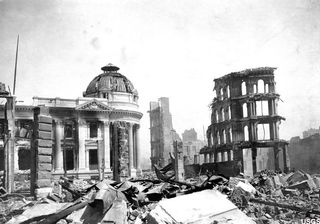
The California earthquake of April 18, 1906 ranks as one of the most significant earthquakes of all time. It measured a magnitude of 7.8. Shaking damage was equally severe in many other places along the fault rupture. The frequently quoted value of 700 deaths caused by the earthquake and fire is now believed to underestimate the total loss of life by a factor of 3 or 4. Most of the fatalities occurred in San Francisco, and 189 were reported elsewhere.
Million Dollar Bridge Collapses
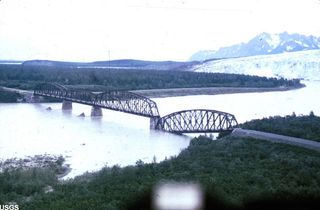
Alaska Earthquake March 27, 1964. One span of the Million Dollar truss bridge of the former Copper River and Northwestern Railroad was dropped into the Copper River by the earthquake, and the other truss spans were shifted on their piers.
Cracks!
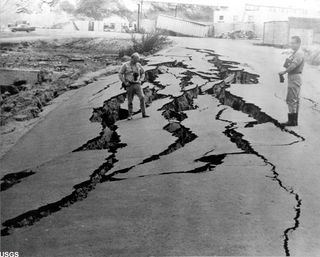
Peru Earthquake May 31, 1970. Slumping and fissuring of the paved road near the bay shore in western Chimbote due to liquefaction and lateral spreading of water-saturated beach sediments. This earthquake, measuring 7.9 magnitude, was one of the deadliest earthquakes in history, responsible for 66,000 deaths and costing nearly $530,000,000 in damage.
A Store in Ruins
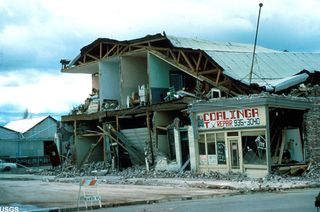
Coalinga, California, Earthquake May 2, 1983. Major failure of the exterior walls of the building containing the Coalinga TV Repair Shop. The shop was in the restricted area of heavily damaged downtown Coalinga.
The Roof Crashes Down
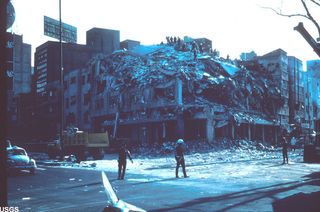
Mexico City Earthquake, September 19, 1985. The top floors of this eight-story building collapsed because of pounding against the next building.
Masonry Church Destroyed
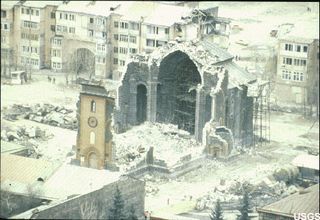
The Armenia Earthquake, December 7, 1988. Collapse of old stone masonry Armenian church near Leninakan. Churches are vulnerable to earthquake damage because of their high unsupported roofs. Many such historical buildings either collapsed totally or sustained severe damage although some almost miraculously survived.
Freeway Split in Half
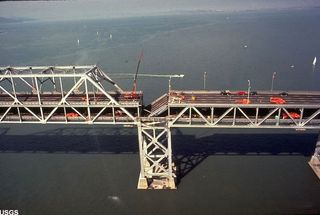
Loma Prieta, California, Earthquake October 17, 1989. Roadbed collapse near the interface of the cantilever and truss sections of the San Francisco-Oakland Bay Bridge. View is northwest. One of the most devastating disasters in U.S. history; an earthquake with a magnitude of 6.9 rocked the California coast from Monterey to San Francisco. Centered near Loma Prieta peak in the mountains south of San Jose, the quake killed 63 people and caused an estimated $6 billion to $10 billion in property loss. It was the first large temblor to jolt the burgeoning urban region since the Great San Francisco Earthquake of 1906 (magnitude 7.8).
Sign up for the Live Science daily newsletter now
Get the world’s most fascinating discoveries delivered straight to your inbox.
Tower takes a Nose-dive
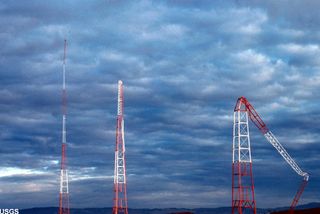
Loma Prieta, California, Earthquake October 17, 1989. The effects of the earthquake were so strong that it caused the collapse of one of the Fremont Baylands KGO radio transmission towers.
Unstable Ground
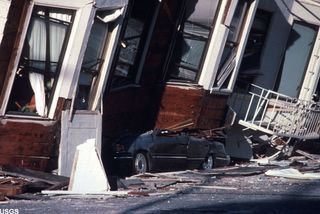
Loma Prieta, California, Earthquake October 17, 1989. San Francisco. An automobile lies crushed under the third story of this apartment building in the Marina District. The ground levels are no longer visible because of structural failure and sinking due to liquefaction.
Ground-Shaking Effects
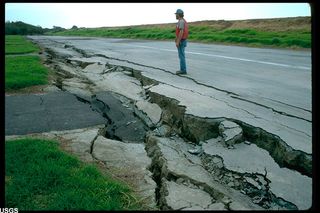
Ground shaking triggered liquefaction in a subsurface layer of water-saturated sand, producing differential lateral and vertical movement in a overlying carapace of unliquified sand and slit, which moved from right to left towards the Pajaro River. This mode of ground failure, termed lateral spreading, is a principal cause of liquefaction-related earthquake damage caused by the Oct. 17, 1989, Loma Prieta earthquake.
Interior Damage
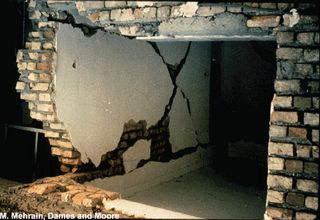
Northern Iraq Earthquake, June 21, 1990. Typical major damage to buildings with many unreinforced shear walls. Note "X-cracking." Unreinforced hollow or solid brick masonry infill, extensively used in Iranian buildings, performed poorly during this earthquake. In Rasht, sixty kilometers from the epicenter, the buildings incurred widespread damage due to such unreinforced masonry sheer walls. However, two thick solid unreinforced masonry walls were placed at the opposite ends of some mid-rise buildings in Rasht. These walls acted as shear resisting elements and appeared to have improved the overall performance of the buildings.











